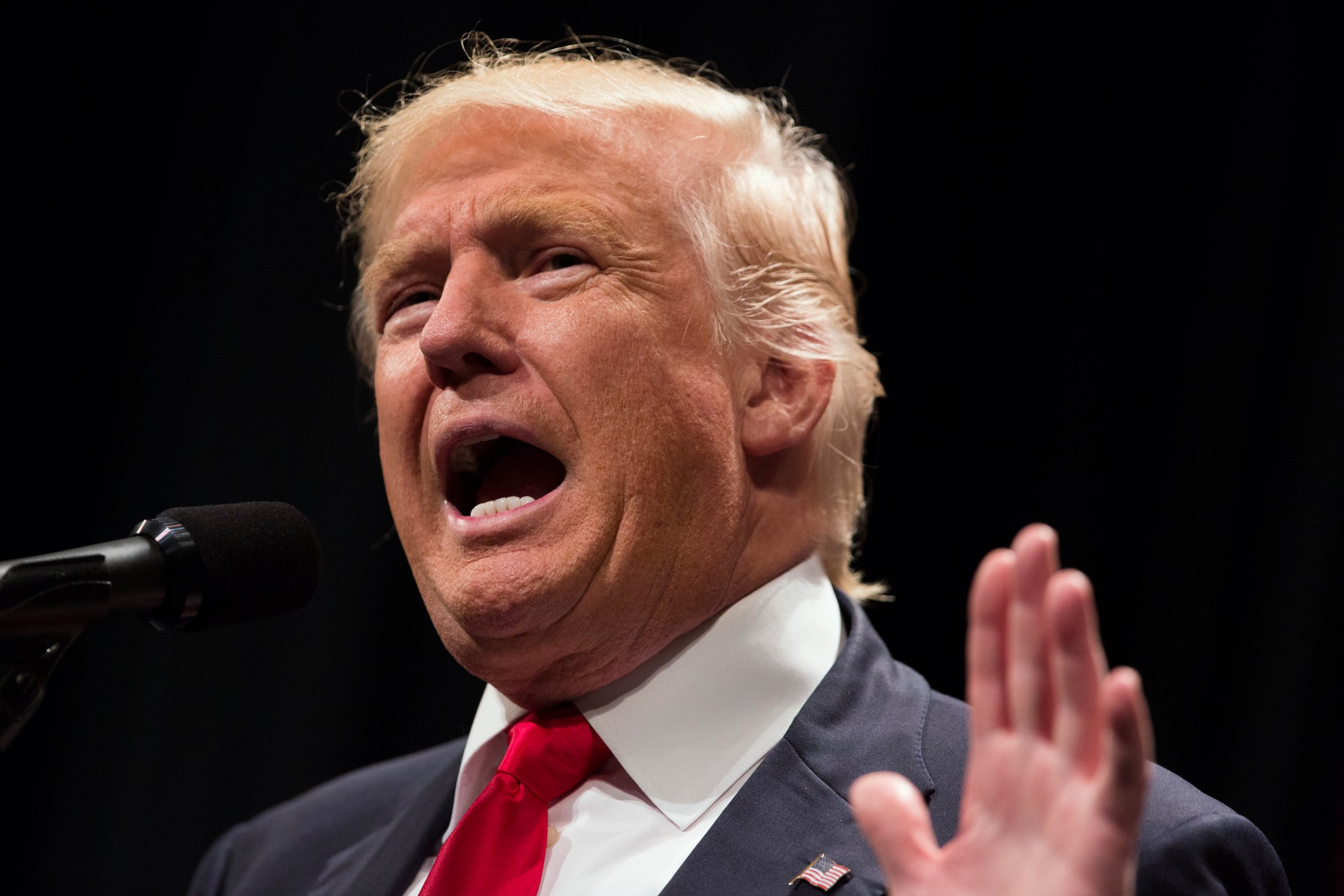
During the taping of a Fox News town hall hosted by Sean Hannity on Wednesday, Republican presidential nominee Donald Trump said he is open to a nationwide “stop and frisk” policy because it “worked incredibly well” in New York City.
As the New York Police Department defines “stop and frisk,” a police officer is “authorized” to stop, question or search a person when he or she “reasonably suspects that a person has committed, is committing or is about to commit a felony or a Penal Law misdemeanor.” The policy, often associated with the crime-fighting agendas of Mayors Rudolph Giuliani and Michael Bloomberg, came under fire in 2013, when federal judge Shira A. Scheindlin called it “indirect racial profiling,” ruling that it was being carried out in an unconstitutional way, resulting in “disproportionate and discriminatory stopping of blacks and Hispanics.” The department revised its protocol in subsequent years, but the debate over the tactic has continued.
But, while the controversial practice has received much attention in the last few years, the debate over “stop and frisk” in New York has been going on for more than 50 years. As TIME reported in the March 20, 1964, issue:
…New York State put on the books two new anticrime statutes. But when Governor Nelson Rockefeller signed the measures into law, he provoked a vehement burst of criticism.
One of the New York statutes authorizes the police, after obtaining court approval, to break into buildings or apartments without announcing themselves in advance—a far cry from the old open-up-in-the-name-of-the-law ceremony that, police say, often gave the occupants time to destroy such evidence as narcotics or gambling records by flushing them down the toilet. The other new measure, promptly labeled the stop-and-frisk law, permits a policeman to stop, search and demand identification of ‘any person abroad in public whom he reasonably suspects is committing, has committed or is about to commit a felony.’
…While the anti-crime bills were being considered by the legislature, they got strong support from law-enforcement agencies, but many lawyers were loud in their disapproval. Said the State Bar Association in denouncing the stop-and-frisk proposal: ‘Nowhere in the history of Anglo-Saxon jurisprudence have we so closely approached a police state.’ When Rockefeller signed the bills anyway, another organization, made up largely of lawyers and called the Emergency Committee for Public Safety, attacked the new laws as “the worst police state measures ever enacted in the history of our nation—ominously dangerous enactments threatening a reign of unrestrained terror in our state.”
Get your history fix in one place: sign up for the weekly TIME History newsletter
An article published exactly a year later reported that the constitutionality of the statute was still being questioned, even as other states had passed similar laws. For example, the Uniform Arrest Act in Delaware, Rhode Island and New Hampshire allowed police to detain anyone, based on a “reasonable ground to suspect,” for up to two hours.
In 1966, however, the New York Court of Appeals upheld the law, ruling in favor of a police officer whose use of the tactic seemed to have stopped a potential burglary, as TIME reported:
One warm July afternoon in 1964, off-duty New York City Policeman Samuel Lasky heard a noise outside his apartment door in suburban Mount Vernon. Two strangers were tiptoeing down the hall. Lasky hurriedly grabbed his pistol and managed to collar one, John F. Peters, who protested that he was merely visiting a married girl friend in the building. Not impressed, Lasky frisked Peters and felt something that “could have been a knife.” What Lasky actually found was an envelope containing burglar’s tools—for possession of which Peters was duly convicted.
Most citizens would surely agree that Patrolman Lasky was the model of an alert, courageous cop in action. Civil-libertarians, however, were quick to ask whether his search violated Peters’ constitutional rights. In a decision written by Judge Kenneth Keating, the New York Court of Appeals has just answered that question with a resounding no. It affirmed Peters’ conviction and declared that Lasky deserves ‘our highest praise.’
Beyond that, by a vote of 5 to 2, the court specifically upheld New York’s controversial “stop and frisk” law, which empowers a policeman not only to ‘pat down’ a suspect for concealed weapons in any public place, but also to seize ‘any other’ illegal objects that he finds in the process.
In 1968, the Supreme Court echoed that decision, holding that the Fourth Amendment’s ban on unreasonable search and seizure applies to stop-and-frisk laws, but that “a reasonably prudent officer” can use the technique to search for weapons, “regardless of whether he has probable cause to arrest that individual for crime or the absolute certainty that the individual is armed.” (The case law on that topic has continued to evolve in the years since.)
“Of the 27,061 people its officers frisked last year, more than 80% were unarmed,” TIME reported in 1999, “which suggests that the cops felt they needed little in the way of probable cause to stop someone.”
More Must-Reads from TIME
- Cybersecurity Experts Are Sounding the Alarm on DOGE
- Meet the 2025 Women of the Year
- The Harsh Truth About Disability Inclusion
- Why Do More Young Adults Have Cancer?
- Colman Domingo Leads With Radical Love
- How to Get Better at Doing Things Alone
- Michelle Zauner Stares Down the Darkness
Write to Olivia B. Waxman at olivia.waxman@time.com